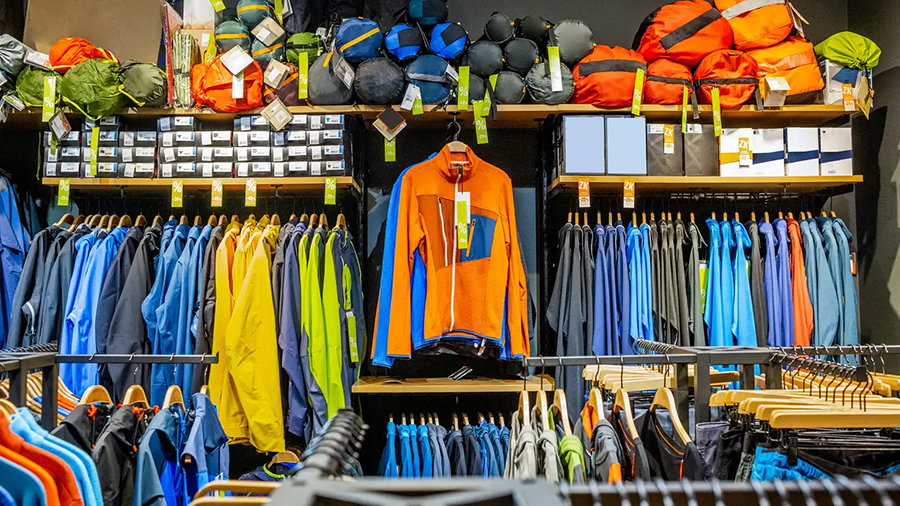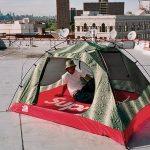Speaking at Wells Fargo’s Sixth Annual Consumer Conference, Academy Sports and Outdoors executives discussed the retail chain’s competitive advantages and how it reworked its expansion plans while rolling out an aggressive strategy.
Academy opened nine stores last year and reported that it is on track to open 14 stores in 2023 after not opening any over the prior few years as new management reset the business.
At an Investor Day in April, Academy outlined its five-year plan to expand its store base by 50 percent, or 120 to 140 stores, by 2027. It has 273 stores across 18 states.
At the Wells Fargo conference, CEO Steve Lawrence said Academy, under the new team, had adopted a “very different” real estate strategy from its traditional approach.
“If you went back to our old real estate strategy, pre-kind of the existing management team, we would probably have to define it as ‘finding cheap rent,'” said Lawrence. “We literally would go wherever the rent was lowest versus maybe the number one or number two retail node.”
Lawrence also said many of its stores opened under the former strategy were not accretive. He said, “We were just subdividing our same geography. We’d open up multiple stores in Dallas and cannibalize ourselves.”
Under the updated approach, Academy focuses on opening stores, whether in new or adjacent markets, where it believes it will be “taking market share from somebody else” and not cannibalizing existing stores.
Lawrence also said that Academy had become more strategic entering markets. He said Academy devises a “marketplace strategy” where it could go into an area with one, two or three stores depending on the market, but made sure “that we’re going into those markets in force, maybe not all on the same day, but over 12-to-18-month period. We fill that market out.”
Company President Michael Mullican said Academy “essentially eliminated” its real-estate department as the chain paused on new store openings and brought back its expansion capabilities “in a very methodical way.”
Still, with nine openings, according to Mullican, 2022 was “the definition of a test and learn year” in expansion tactics. He said Academy faced a “different learning case” with each opening, with some stores in new markets and some smaller in size, at around 42,000 square feet, versus the chain’s prototype at 63,000 square feet. Mullican said, “This year, we’re applying those learnings. We’re happy with the path that we’re on; this will be the biggest driver in our long-range growth plan.”
Mullican said all Academy stores open longer than one year are profitable. Approximately 90 percent of its stores have double-digit four-wall EBITDA rates, with only a few in the single-digits. Mullican said, “This is a fleet that is very productive. We think opening stores is a good thing to do because of that. We have a tremendous amount of white space. We’re only in 18 states, so there’s a lot of growth that we can deliver.”
All nine stores opened in 2022 are said to be on track to clear the 20 percent ROIC (return on invested capital) hurdle Academy sets for new stores.
Among the learnings since returning to expansion mode is that newer markets “will ramp a little slower” than openings inside or near legacy markets. Academy remains confident that new markets will mature. For example, Mullican pointed to Jacksonville, FL, where Academy entered about a decade ago and is now generating profitability levels similar to legacy markets in Houston, TX. Mullican said, “We’re at a point where we’re applying some new learnings and look to accelerate from here.”
About one-third of the planned new store openings will be in new markets, a third in existing heritage markets, and one-third in adjacent markets.
Asked about the competitive landscape, Lawrence said that as a sports and outdoor retailer, Academy has about a $175 billion total addressable market.
“It’s very fragmented,” said Lawrence. “Nobody holds more than 10 percent share. So, we think there’s still a lot of opportunity to gain a share within that space. And, I think what we’ve seen candidly is more of an opportunity as competitors have pulled back out of the outdoor space, which is our core competency. They focus more on apparel and a little bit on sporting goods. So, we believe that gives us an opportunity now.”
The outdoor categories, including hunting, fishing, camping, coolers, and drinkware, “are under a little pressure,” noted Lawrence, particularly the hunting space; however, the overall hunting category remains “way up” versus pre-pandemic levels with ammunition tracking nearly 100 percent higher versus 2019 levels. Lawrence said, “You’ve seen some of our competitors stop carrying certain calibers of ammunition. Some are pulling back on the wholesale category and getting out of the business. So, that gives us an opportunity to grab that share.”
Lawrence also noted that Academy had a cross-shopping opportunity as hunters and other outdoor enthusiasts shop at Academy to support their other sports needs. Lawrence observed, “The guy who hunts and fishes is also the guy who’s at the tailgate with his friends on the weekend at the football game. Or he’s on the sidelines watching his kid play baseball or soccer or football. So, we believe that long term, that’s where we need to be.”
Mullican noted that Academy’s best customers are outdoor customers. He said, “They tend to spend more. They tend to shop more often. And, so, that’s an important part of our business. And we’re more differentiated there than we’ve ever been before.”
Asked about specific competitors, Lawrence noted that given the “breadth of categories we carry, it varies by category.”
Dick’s competes against some of the sporting goods, apparel and footwear Academy carries. Mullican said Academy had a broader overall assortment, particularly a stronger outdoor business than Dick’s. He added, “From a business perspective, our stores are more productive and more profitable than Dick’s.”
Hibbett, Lawrence noted, is a competitor in smaller markets “although they’re moving further away from who our core customer is.”
Bass Pro and Cabela’s were cited as bigger competitors in outdoor categories, although Lawrence said Academy has a “unique position” in those categories.
Walmart would be a competitor, although Lawrence noted that its offerings focus on the lower end of Academy’s mix while Academy offers a broader array of price points. He also noted that Academy is focused on upgrading assortments in recent years as part of an amplified “good, better, best” approach to extend its customer reach. Said Lawrence, “You take a category like baseball gloves. If you go into a Walmart, they’ll carry maybe six offerings of baseball gloves, somewhere between $20 to $30. Our sweet spot starts at about $30 and goes well over $100. And when you think about a competitor like Dick’s, they probably start around $100, and their sweet spot is well north of that. We’re that middle player in the space.”
Mullican noted that beyond a broader assortment, Walmart does not carry many of the premium brands Academy does, citing examples of Nike, Yeti and The North Face.
Finally, Amazon and other digitally-native businesses are also competitors for some products, although Mullican noted that many products Academy sells are “experiential in nature,” with customers wanting to feel or try the product. Mullican inferred that customers cannot do that online. Bulkier items also present challenges for a site such as Amazon. Mullican said, “There are certain things we can allow you to pick up on the same day that Amazon can’t do. They can’t ship a treadmill, basketball system or kayak to your store. You can pick it up with us for free.”
Photo courtesy Academy Sports + Outdoors
















